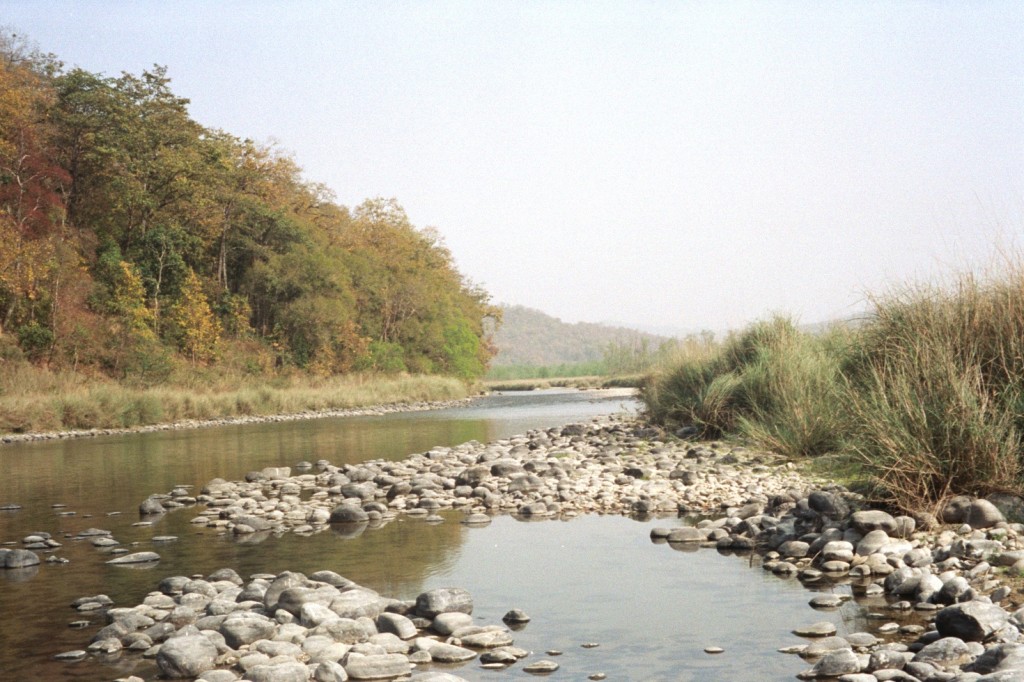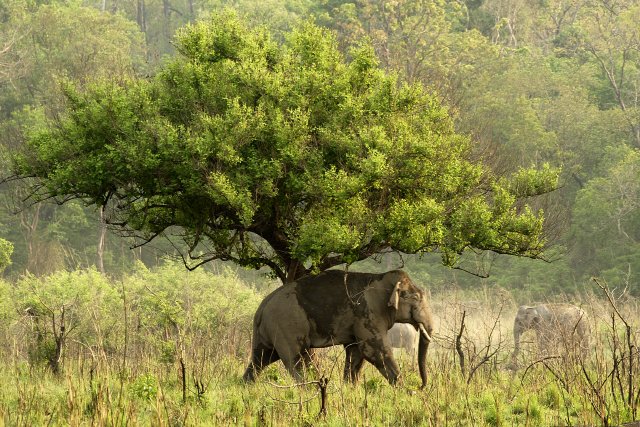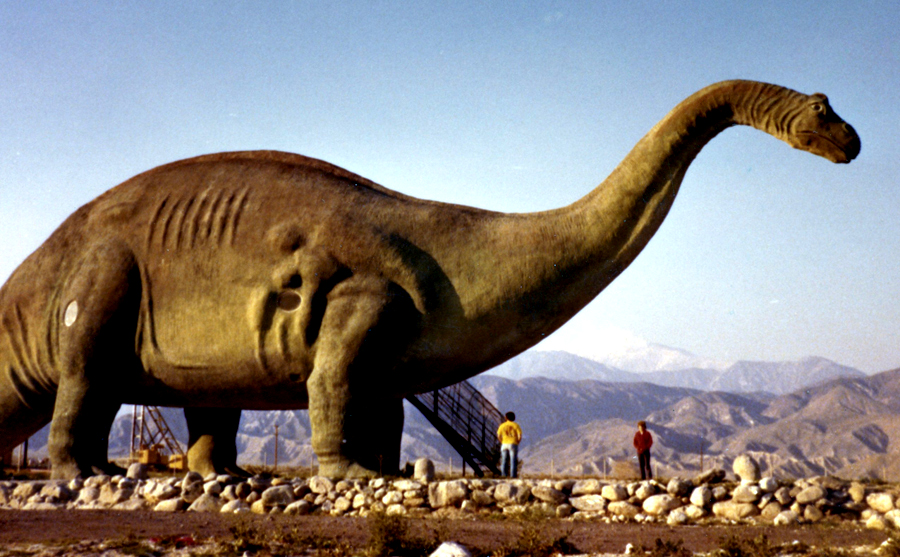For an urban Indian, there’s nothing quite like the first breath of fresh hill air while on a trip to Jim Corbett National Park. Clambering down from the Ranikhet Express at Ramnagar at 5 o’clock on a chill November morning was enough to make me gasp. The carboniferous cocktail of the city was exhaled in a sigh, and the great Outdoors rushed in, leaf cooled, earth-scented. As my brothers and I headed towards Corbett, the air, like a fine wine, just got better and better, until we arrived at our camp, and tumbled from the jeep, giggly and intoxicated. We tramped through the darkness, guided by the bobbing miner’s lamps on our guides’ headbands’ towards Camp Forktail Creek — set a short walk through the forest away from the road. The birds started their dawn chorus as we cradled our hot tea mugs in our hands, and inhaled.
After a delicious breakfast, we were handed stout walking sticks and set out with our wonderful guide, Conan, into the forest. One of the little-known delights of Jim Corbett National Park is the surrounding ‘buffer zone’ area, where two-legged creatures can walk, unencumbered. Nature knows no boundaries and the birds, animals and plants of Corbett criss-cross with ease around those hard human edges that separate the National Park from the rest. And here, like I say, you can walk. There’s something magical about walking in the forest… feeling the crunch of twigs beneath your shoes, the scent of wild leaves, suddenly noticing that the trees are loosely linked by skeins of spider’s silk, gilded silver by the early sunlight. The forest canopy arches overhead and one instinctively talks in a whisper as you would entering a cathedral. And there is no better way of birdwatching, especially if you have an expert guide with you, as we did, who can spot a tree-creeper hunting out ants on the bark of a tree, or hone in on the distant ‘toc-toc-toc’ of a woodpecker at work.
Enter the tiger’s pugmarks
The forest can be read like a book by those who know the signs. We stopped by a tree. The soft bark was deeply etched with scratch-marks, evidence of a tiger doing what all cats do: only usually on the table legs at home. “Too high up for a leopard,” points out our guide, and we marvel at the mental image of the sheer size of the cat that could reach up — well above our heads — to sharpen its deadly claws. Pugmarks, of course, are the classic telltale signs of tiger activity. But there are also signs of wild boar, where the undergrowth and soft ground has been churned up by their snuffling snouts, as well as deer-droppings and hoof-prints where cheetal and sambar have left their mark.
As we city illiterates strove to decipher the jungle book, I was reminded of the man who made this part of the country his own, who inspired the creation of a National Park here, and after whom it was named: Jim Corbett. There are few who can write about the forest with such elegance, such ease and tell such gripping tales. Corbett’s stories are most often about the tracking and killing of dangerous maneaters — leopards and tigers — but to read them is to begin to understand an entire ecosystem. They are a lesson in the mores of its inhabitants, an initiation into the subtle ever-changing interlinkage of man and beast. Our guide suddenly dropped to his knees and picked up a handful of earth. Rubbing it in his palm he then lifted it to his nose. “Basmati,” he pronounced, smiling broadly. And we take turns smelling the tiger-sprayed earth. It does, indeed, smell of freshly cooked rice.

A photo of Sambar deers by Grassjewel
Finally, a tiger!
Later that day, my brothers headed off with our hosts for a short jeep ride . “Promise me you won’t see a tiger,” I pleaded. “No chance,” they reassured me. “We’re going up to the hill, and tigers never show up there, and anyway it’s afternoon, so no chance.” Of course, they not only saw a magnificent tigress from the road, they even tracked her for a while down a dry riverbed!
The Park
The next day we ventured into the Park itself: the morning spent roaming around in an open-top jeep, and the afternoon swaying along atop a 40-year-old elephant called Asha. No more tigers that day, but a herd of elephants seen at close quarters, being watched warily by a handsome sambar, and spotting a bewildering variety of birds was more than enough. And that’s just one of the many national parks in the country.
Later, a flash of electric blue signalled a kingfisher diving for its lunch on the far side of the river. Pied wagtails bobbed hopefully from rock to rock, scanning the water’s edge for tasty tidbits. As the early bats winged their way out for the evening, somewhere, undisturbed, away from human intrusion, Corbett’s beloved tigers would be licking their chops after the day’s kill and settling down to sleep. Knowing they are there — those last few precious, wild and wonderful creatures — made our small lives richer, more meaningful, more unimaginably strange just as knowing that they may not be, for many years more, diminishes us all.
Now some quick facts
Location
Corbett NP is located in the Ramganga Valley near the Himalayan foothills
Distances
19 km NW of Ramnagar, 263 km NE of Delhi Route from Delhi NH24 to Moradabad via Gajraula; SH to Kashipur; NH121 to Amdanda, Garjia and Dhangarhi gates of Corbett NP via Ramnagar. To know more, you can also visit ixigo’s page on New Delhi to Corbett
When to go
Between mid- November and April is the best season weatherwise. Winters can be very cold, so do take serious woollens along!
Park closes
For the monsoon season, from mid-June to mid- November. However, most of the hotels and resorts surrounding the Park stay open for those wishing to travel during this period, and enjoy the unique experience of the forested foothills in the rainy weather. To know more, you can check out Corbett’s weather page for the latest updates.
Go there for Tigers, angling Wildlife/ Forest Dept offices. The Director Corbett Tiger Reserve Ramnagar Dist Nainital Tel: +91-5947-253977 Park Reception Tel: +91-5947-251489; website: corbettnationalpark.in STD code 5947.
By Kshitiz






